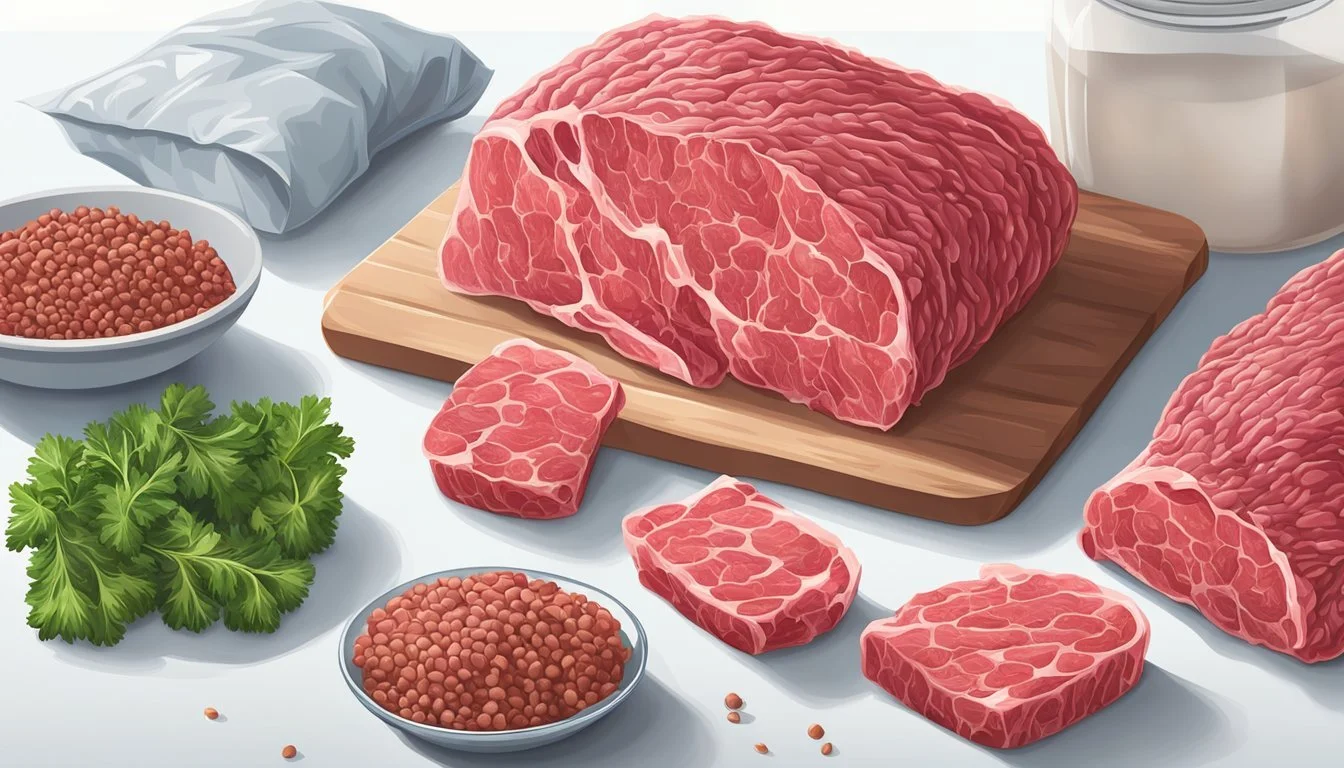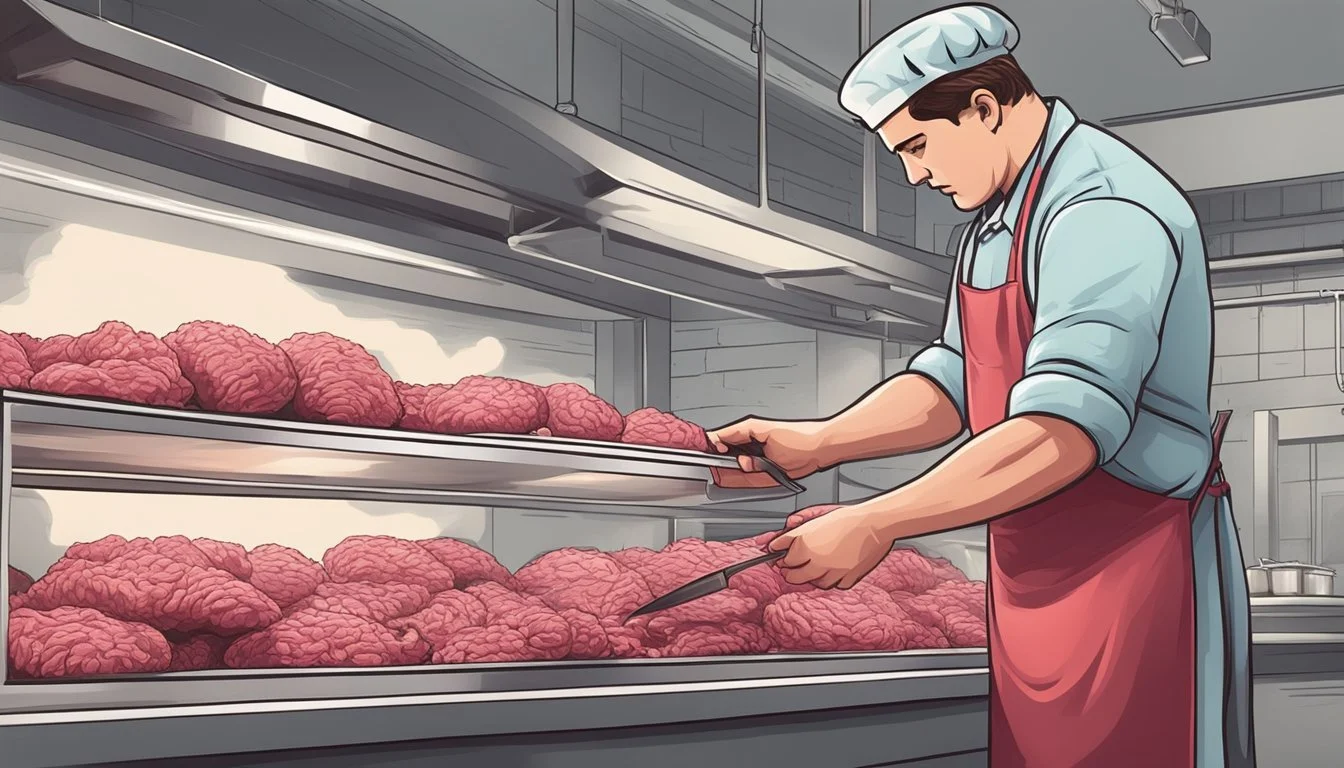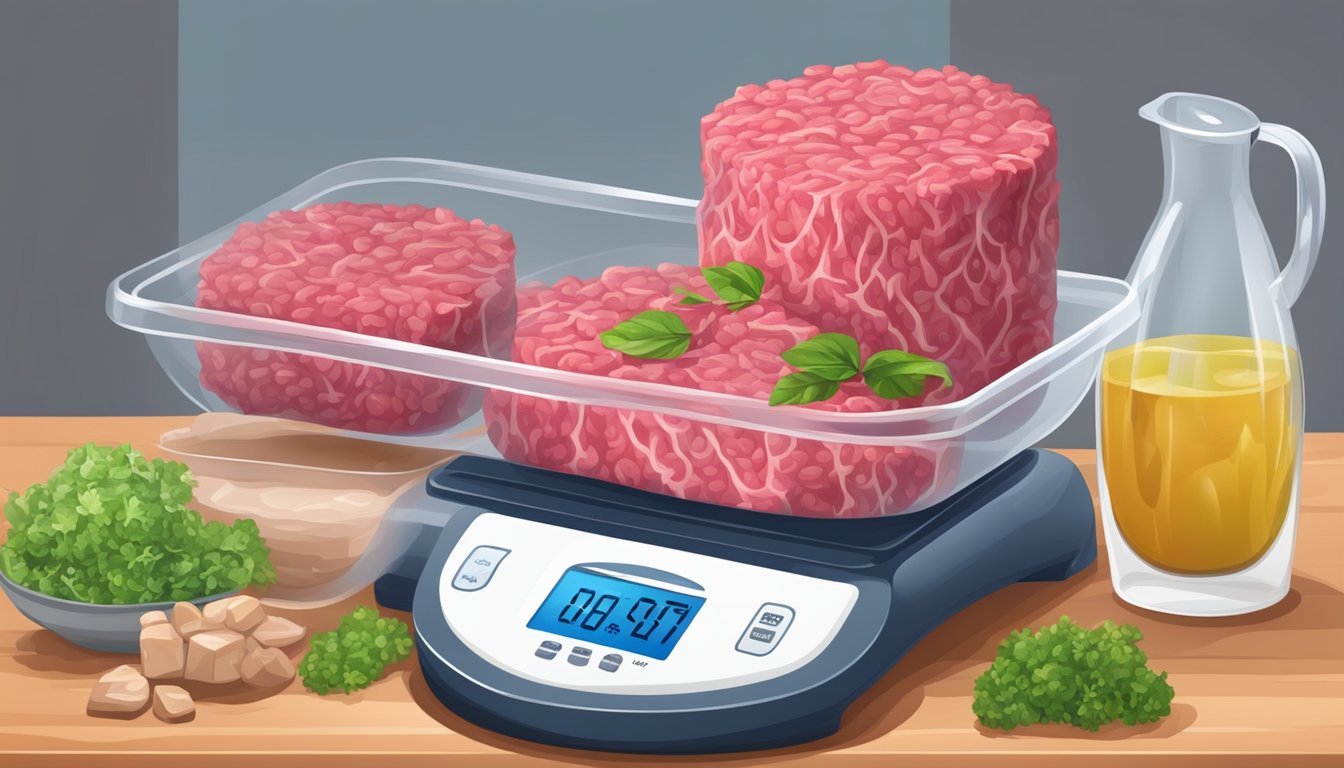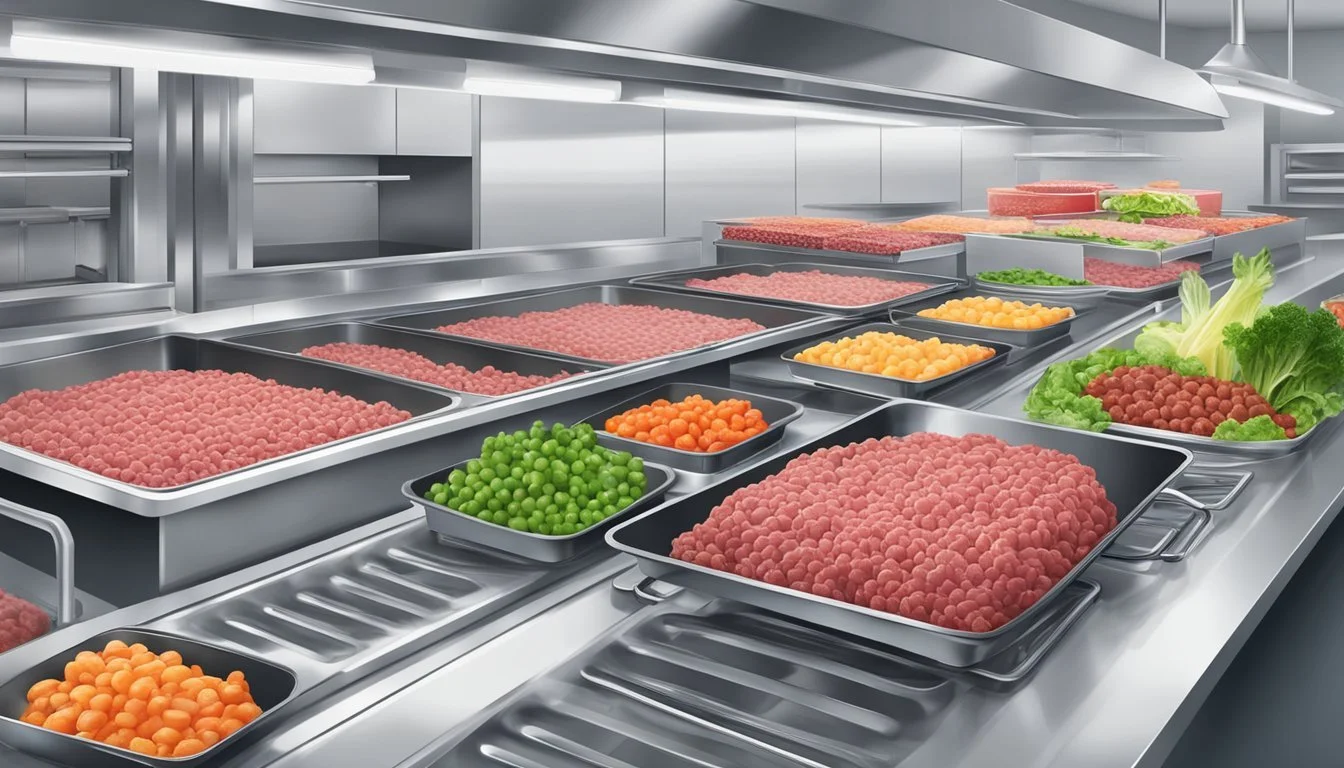Fresh vs Frozen Mince Beef: A Comparison of Quality, Flavor, and Cooking Performance
Mince beef is a versatile ingredient found in many kitchens. When shopping, consumers often face a choice between fresh and frozen options. Both fresh and frozen mince beef can be nutritious and flavorful, with the main differences lying in texture, convenience, and shelf life.
Fresh mince beef typically has a firmer texture and is ready to use immediately. It's often preferred by those who prioritize immediate cooking and consume meat quickly. Frozen mince beef, on the other hand, offers extended shelf life and can be more convenient for meal planning and reducing food waste.
The freezing process, especially when done rapidly, can preserve the quality and nutrients of the meat. While some may perceive a slight difference in texture upon thawing, properly frozen mince beef can retain much of its original flavor and nutritional value. The choice between fresh and frozen ultimately depends on individual preferences, cooking habits, and storage capabilities.
Understanding Fresh and Frozen Meat
Fresh and frozen meat differ in several key aspects that affect their quality, taste, and nutritional value. These differences stem from the processing and storage methods used for each type.
Characteristics of Fresh Meat
Fresh meat has a bright red color and a firm texture. It feels dry to the touch and has a mild, meaty aroma. Fresh beef should be cooked shortly after purchase to maintain its quality and prevent bacterial growth.
The texture of fresh meat is firmer due to intact muscle fibers. This contributes to a more satisfying chewing experience. Fresh meat often has a more pronounced flavor profile compared to its frozen counterpart.
Butchers typically prepare fresh meat daily using specialized tools like meat cleavers. This ensures customers receive recently processed cuts.
Characteristics of Frozen Meat
Frozen meat undergoes structural changes during the freezing process. Ice crystals form within the meat, breaking down some of the muscle fibers. This can lead to a softer texture upon thawing.
The color of frozen meat may appear darker or duller than fresh meat. When thawed, it might release more moisture than fresh meat due to the ice crystal formation.
Frozen meat has a significantly longer shelf life than fresh meat. This extended storage capability helps reduce food waste and provides convenience for consumers.
Nutritional Composition
Both fresh and frozen meats retain similar nutritional profiles. The freezing process does not significantly alter the protein content or essential nutrients in meat.
Proteins, omega-3 fatty acids, and other vital nutrients remain largely intact in frozen meat. Some studies suggest that freezing may help preserve certain nutrients better than refrigeration over time.
Fresh meat may have a slight edge in nutrient retention immediately after processing. However, this advantage diminishes as storage time increases.
Physical Characteristics
Fresh meat:
Firm texture
Bright red color
Dry surface
Strong, meaty flavor
Frozen meat:
Softer texture when thawed
Slightly darker color
More moisture release when thawed
Potentially milder flavor
The formation of ice crystals in frozen meat can affect its texture and moisture content. When thawed, frozen meat may release more liquid, which can impact cooking methods and final dish quality.
Some cuts of meat, particularly steaks, may benefit from freezing if stored properly. Optimal freezing conditions include temperatures around 27°F (-2.8°C) and minimal temperature fluctuations.
Health and Nutrition
Fresh and frozen minced beef offer similar nutritional profiles. The key differences lie in vitamin retention and potential quality changes during freezing and thawing processes.
Nutritional Value and Quality
Minced beef, whether fresh or frozen, provides essential nutrients. It's an excellent source of high-quality protein, containing all essential amino acids. Both forms offer comparable amounts of iron, zinc, and B vitamins.
Fresh mince may have a slight edge in texture and flavor. However, properly frozen mince can maintain its quality for extended periods. Flash-freezing techniques help preserve the meat's structure and nutrient content.
Protein content remains stable during freezing. A 100g serving of minced beef typically provides around 20-25g of protein. This holds true for both fresh and frozen varieties.
Vitamins and Minerals
Freezing can affect vitamin content in minced beef. Some water-soluble vitamins, like B12 and folate, may decrease slightly during freezing and thawing cycles. However, these losses are generally minimal.
Minerals in minced beef are largely unaffected by freezing. Iron, zinc, and selenium levels remain stable. A 100g serving of minced beef typically provides:
Iron: 2-3mg
Zinc: 4-5mg
Selenium: 15-20μg
Fresh mince might retain slightly more B vitamins. Yet, the difference is often negligible in a balanced diet. Both fresh and frozen mince contribute significantly to daily vitamin and mineral intake.
Preservation and Storage
Proper preservation and storage techniques are crucial for maintaining the quality and safety of mince beef. These methods impact texture, flavor, and shelf life while helping to reduce food waste.
Freezing Techniques
Freezing is an effective way to extend the shelf life of mince beef. Flash freezing rapidly lowers the temperature, forming smaller ice crystals that minimize damage to meat fibers. This helps preserve texture and quality upon thawing.
To freeze mince beef:
Portion into meal-sized amounts
Wrap tightly in plastic wrap or parchment paper
Place in airtight containers or vacuum-sealed bags
Label with date and weight
Store at -18°C (0°F) or below
Properly frozen mince beef can last 3-4 months without significant quality loss. Avoid refreezing thawed meat to prevent bacterial growth and texture changes.
Aging and Maturation
Aging beef improves tenderness and flavor through enzymatic breakdown of muscle fibers. While not typically applied to mince, the source beef may be aged before grinding.
Two main aging methods:
Wet aging: Vacuum-sealed in plastic, 10-14 days
Dry aging: Exposed to air in controlled environments, 14-35+ days
Dry-aged beef develops a more intense flavor but experiences greater moisture loss. This process is usually reserved for whole cuts rather than mince.
Packaging and Storage Methods
Proper packaging protects mince beef from contamination and freezer burn. Vacuum-sealing removes air, extending shelf life and preventing oxidation. Alternatively, wrap tightly in plastic or parchment paper before placing in airtight containers.
For refrigerated storage:
Keep in original packaging or rewrap tightly
Store on bottom shelf to prevent drips
Use within 1-2 days of purchase
Maintain fridge temperature at 4°C (40°F) or below
Shelf Life and Food Waste
Fresh mince beef has a short shelf life, typically 1-2 days when refrigerated. Freezing extends this to 3-4 months. Always check use-by dates and follow proper storage guidelines to ensure safety and quality.
To reduce food waste:
Buy only what you need
Freeze excess promptly
Use older packages first
Plan meals around expiration dates
Cook and consume thawed meat within 24 hours
Proper storage and timely use of mince beef help minimize food waste while ensuring optimal flavor and safety.
Safety and Quality Considerations
Proper handling and storage are crucial for maintaining the safety and quality of mince beef, whether fresh or frozen. Temperature control plays a key role in preventing bacterial growth and preserving meat quality.
Food Safety and Handling
Fresh mince beef requires careful handling to ensure food safety. Store it at 40°F (4°C) or below in the refrigerator and use within 1-2 days of purchase. For longer storage, freeze at 0°F (-18°C) or lower. When freezing, package the mince in airtight containers or freezer bags to prevent freezer burn.
Frozen mince can be stored safely for 3-4 months. Always check the label for use-by dates and storage instructions. When thawing frozen mince, do so in the refrigerator, never at room temperature. Use thawed mince within 24 hours.
Risks of Bacterial Growth
Mince beef is particularly susceptible to bacterial growth due to its large surface area. Harmful bacteria like E. coli and Salmonella can multiply rapidly in the "danger zone" between 40°F and 140°F (4°C to 60°C).
Fresh mince is at higher risk for bacterial growth if not stored properly. Frozen mince slows bacterial growth but does not kill existing bacteria. Once thawed, it should be cooked promptly.
To minimize risks:
Keep mince refrigerated or frozen until use
Wash hands and utensils before and after handling
Cook mince to an internal temperature of 160°F (71°C)
Impact of Freezing on Meat Quality
Freezing affects the texture and quality of mince beef. Ice crystals that form during freezing can damage cell membranes, leading to moisture loss upon thawing. This can result in a slightly drier texture compared to fresh mince.
Proper freezing techniques help maintain quality:
Freeze mince quickly at 0°F (-18°C) or below
Use within 3-4 months for best quality
Thaw in the refrigerator to minimize moisture loss
While frozen mince may lose some firmness, its nutritional value remains largely intact. Protein content is unaffected by freezing. Some studies suggest minimal nutrient loss in properly frozen and thawed meat compared to fresh.
Culinary Uses and Techniques
Fresh and frozen mince beef offer versatile options for cooking. Each type requires specific handling and preparation methods to maximize flavor and texture. Adapting recipes and applying suitable marinating techniques can elevate dishes made with either form of mince.
Cooking Fresh vs Frozen Meat
Fresh mince beef cooks quickly and evenly. It's ideal for recipes requiring immediate use, like burgers or meatballs. Thaw frozen mince thoroughly in the refrigerator before cooking to ensure even heat distribution.
When cooking frozen mince directly, use lower heat and longer cooking times. This prevents the outside from burning while the center remains cold. Break up frozen chunks as they cook for more uniform results.
Fresh mince tends to release less moisture during cooking, resulting in better browning and flavor development. Frozen mince may produce more liquid, which can be drained or reduced for optimal texture.
Recipe Adaptations
Adjust cooking times and liquid quantities when using frozen mince in recipes designed for fresh. Add a few extra minutes to account for residual moisture from thawing.
For stews and sauces, frozen mince works well as it absorbs flavors during the longer cooking process. Fresh mince is better suited for dishes requiring distinct texture, like meatloaf or stuffed peppers.
Consider increasing seasoning slightly for frozen mince to compensate for potential flavor dilution from excess moisture. Use binding agents like breadcrumbs or eggs to improve texture in recipes using thawed mince.
Marinating and Seasoning
Marinate fresh mince for 30 minutes to 2 hours for optimal flavor absorption. Frozen mince can be marinated while thawing in the refrigerator, allowing for longer flavor infusion.
Salt fresh mince just before cooking to prevent moisture loss. For frozen mince, salt after thawing to avoid texture changes during the freezing process.
Use dry rubs on fresh mince for a flavorful crust when grilling or pan-searing. For frozen mince, incorporate spices directly into the meat while thawing for even distribution.
Acidic marinades work well with both fresh and frozen mince, tenderizing the meat and adding flavor. Limit marinating time for fresh mince to prevent over-tenderizing.
Economic and Practical Considerations
Fresh and frozen mince beef each offer distinct economic advantages and practical benefits for consumers. The choice between them depends on factors like cost, availability, and intended use in meals.
Cost-Benefit Analysis
Fresh mince beef often carries a higher price tag than its frozen counterpart. Grocery stores and butchers typically charge more for fresh meat due to its shorter shelf life and higher handling costs. Frozen mince, on the other hand, can be purchased in bulk at lower prices.
Buying frozen mince in larger quantities can lead to significant savings over time. However, fresh mince may be more economical for immediate use, as it doesn't require thawing time.
The USDA reports that frozen meat can be safely stored for several months, reducing food waste and potentially saving money in the long run.
Availability and Accessibility
Fresh mince beef is widely available at grocery stores and butcher shops. Its availability can vary depending on supply and demand, especially for specialty cuts or organic options.
Frozen mince offers consistent availability year-round. It can be stockpiled during sales, ensuring a steady supply for future use.
Rural areas or places with limited access to fresh meat suppliers may find frozen mince more readily accessible. It provides a reliable protein source without frequent shopping trips.
Versatile Uses in Meals
Both fresh and frozen mince beef are versatile ingredients in the kitchen. Fresh mince is ideal for dishes requiring immediate cooking, such as burgers or meatballs.
Frozen mince excels in recipes where texture changes are less noticeable, like casseroles, chili, or pasta sauces. It can be thawed quickly for last-minute meal preparations.
Pre-portioned frozen mince allows for easy meal planning and portion control. This can be particularly useful for households looking to manage their meat consumption or follow specific dietary guidelines.
Environmental Impact
Meat production and preservation methods significantly affect the environmental footprint of beef. Freezing offers sustainability benefits compared to some other preservation techniques.
Meat Production and Sustainability
Beef production has a substantial environmental impact. Cattle emit methane, a potent greenhouse gas. Raising beef requires large amounts of land, water, and feed. A kilogram of beef generates about 27 kg of CO2 equivalent emissions.
Grass-fed and grain-fed beef have different impacts. Grass-fed cattle often use marginal land but may produce more methane. Grain-fed cattle reach market weight faster but require cropland for feed production.
Improving cattle feed efficiency and manure management can reduce emissions. Some producers are exploring regenerative grazing practices to sequester carbon in pastures.
Environmental Benefits of Freezing
Freezing helps extend beef's shelf life and reduce food waste. About 30-40% of food produced globally is wasted. Preserving beef through freezing allows it to be stored longer, decreasing spoilage.
Frozen beef can be transported and stored more efficiently than fresh. It doesn't require constant refrigeration during shipping. Frozen beef may travel farther with a lower carbon footprint than locally-sourced fresh beef in some cases.
Other preservation methods like smoking and curing often use more energy than freezing. They may also involve additives. Freezing maintains beef's nutritional value without extra processing or ingredients.





